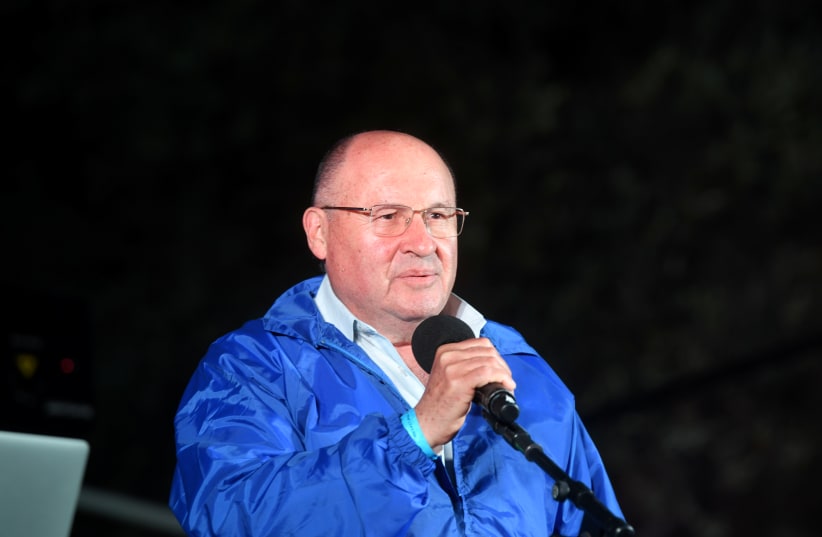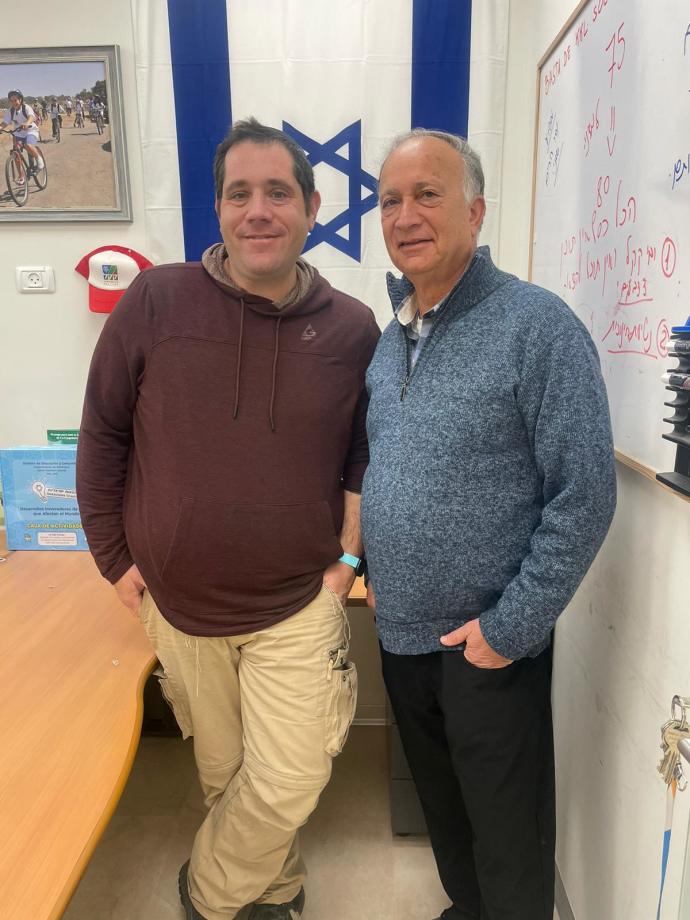The March of the Living in Poland is not an easy journey. Walking the three-kilometer path from Auschwitz to Birkenau, where untold numbers went to their deaths, is a difficult, emotional experience. But the March of the Living is far more than a ceremony of mourning and sadness. It is a demonstration of hope and resilience.
Those who attempted to annihilate the Jewish people did not succeed, and out of the destruction and horror came those who fulfilled the dream of generations and participated in the creation of an independent State of Israel. At least half of those who fought in Israel’s War of Independence were Holocaust survivors.
The culmination of the March of the Living takes place in Israel during the period when Israelis will be celebrating the 75th anniversary of its independence. Participants in the March of the Living who visit Israel during this period will tour the country under the auspices of KKL-JNF, which, since its establishment in 1901, has been developing the land of Israel, strengthening the bond between the Jewish people and its homeland.
This year, some 3,000 Jewish youth from thirteen countries will be joining the March of the Living segment in Israel. They will arrive in Israel after Yom HaShoah (Holocaust Memorial Day) and will visit and tour the land for approximately one week until after Yom Ha’atzmaut (Israel Independence Day).
Avi Dickstein, a board member of March of the Living who is in charge of planning the March’s events in Israel during Israel Independence Day, explains the connection of KKL-JNF for the March of the Living visitors. “When they come to Israel, they are touching the land of Israel,” says Dickstein. “There are different ways in which they relate to the place where the roots of the Jewish people are found. Some of the participants will plant trees in Israel, and in that way, will touch the land. Others, by visiting and experiencing the forests that KKL-JNF manages, will feel the beauty of the land that it has nurtured and developed.”
Guido Goldberg, a KKL-JNF official who works with the Department of Jewish Zionist Identity in Latin America, Spain and Portugal and who has served as a guide on the March of the Living, explains that for MOTL participants, visiting KKL-JNF sites in Israel is much more than a “feel-good” experience that washes away their sadness. It creates a direct historical connection between the Holocaust and the rebirth of the State of Israel.
“KKL-JNF has numerous projects and forests that memorialize the Holocaust and the Righteous among the Nations who saved the Jewish people,” he says. “When you return from Poland and visit a place in Israel that commemorates the place that you just experienced in Poland, you become connected to the land of Israel and close a circle.”
One example of this type of connection is the Forest of the Martyrs (Ya’ar HaKedoshim), located on the outskirts of Jerusalem. The forest, which was first planted in 1951, contains six million trees as a symbolic reminder of the six million Jews murdered in the Holocaust, and “The Scroll of Fire,” an eight-meter-high bronze sculpture created by Nathan Rapaport (1911-1987), himself a Holocaust survivor, in the shape of two scrolls.
One of the scrolls describes the Holocaust, and the other depicts independence. The Holocaust scroll includes figures of Janusz Korczak, the Polish Jewish educator who headed an orphanage and refused sanctuary, staying with orphans when they were sent to Treblinka; a row of helmets symbolizing the Nazi soldiers; a member of The Ghetto Fighters holding a grenade, and other characters behind fences of concentration camps. The Holocaust scroll ends with survivors immigrating to Israel, people from Israel helping them get off the boats, and a Jewish man kissing the land. “We show them all the places in the forests where we have marked the memory of the Holocaust and its heroes, says Dickstein. “In this way, they see that the remembrance of the Holocaust is still alive in Israel.”
KKL-JNF has partnered with the March of the Living since 1990. Each year, MOTL participants tour historical and Biblical sites, nature reserves and innovation centers and learn how KKL-JNF projects continue to build the land. This year, the visitors from the March of the Living will visit 40 different sites throughout the country. At each site, participants will discuss their impressions and feelings and the personal connection they feel at each location.
Dovi Paritsky, who heads the Overseas Department for education and youth at KKL-JNF, describes the different sites that the March of the Living will visit. “We will take them to the classic sites, such as the Old City, the Western Wall and Mount Herzl. They will also visit Biblical sites such as Tel Azeka, near the area where David defeated Goliath. We will learn about the breaking of the siege of Jerusalem during the War of Independence and see the Burma Road, as well as the Kastel, where one of the pivotal battles occurred in 1948.”
Participants will also visit additional KKL-JNF sites, including, among others, the Ben Shemen Forest, Rabin Park, Ammunition Hill, the Hula Valley Nature Reserve, Park Hayarkon, and Neot Kedumim. They will also visit innovation centers in Israel, including the Peres Center for Peace and Innovation and high-tech centers throughout the country.
Paritsky adds that through visiting these sites, participants will learn what it means to be part of the Jewish people and will gain a greater understanding of the importance and connection of the land of Israel to the Jewish people. “The land of Israel is much more than a country,” he notes.
The March of the Living visit to Israel culminates with a parade from Safra Square in Jerusalem to the Western Wall on Independence Day. The march, which is held in conjunction with KKL-JNF, ends with a meaningful prayer at the Western Wall for the thousands of MOTL participants.
In the evening following Independence Day, after the parade to the Western Wall, thousands of past and current March of the Living participants, among them many alumni who have made aliyah to Israel, will enjoy a gala mega-event at the Armoured Corps Memorial Site and Museum at Latrun, which was the site of the Battles of Latrun during the Ward of Independence in 1948. Numerous Holocaust survivors participated in those battles.
“Four thousand Jewish youth will attend this event,” says Dickstein. “This an amazing opportunity for Jewish youth from thirty countries around the world to rejoice together and celebrate Israel’s independence.”
For participants in the March of the Living, he says, who have seen the yellow star shown at Auschwitz, there can be no greater change from sadness to hope than seeing the blue Star of David proudly displayed on the IAF jets that participate in the Air Force flyover on Independence Day.
The educational message of the March of the Living, says Dovi Paritsky, as expressed by visiting Auschwitz and then returning to the State of Israel, is to inculcate a sense of belonging to the Jewish people among its participants. “The March of the Living continues past Birkenau,” he says. “It continues to Jerusalem, where everything started.”

